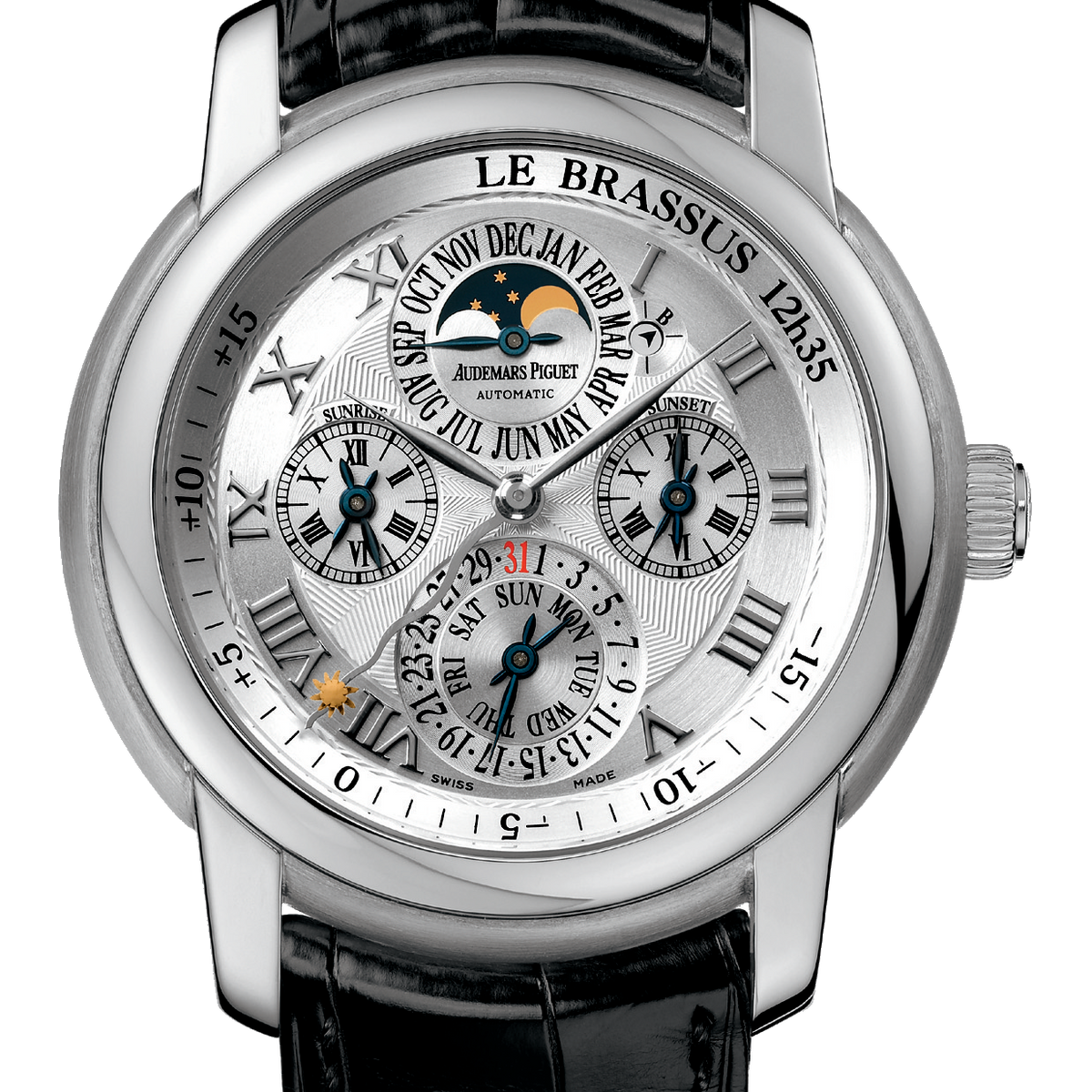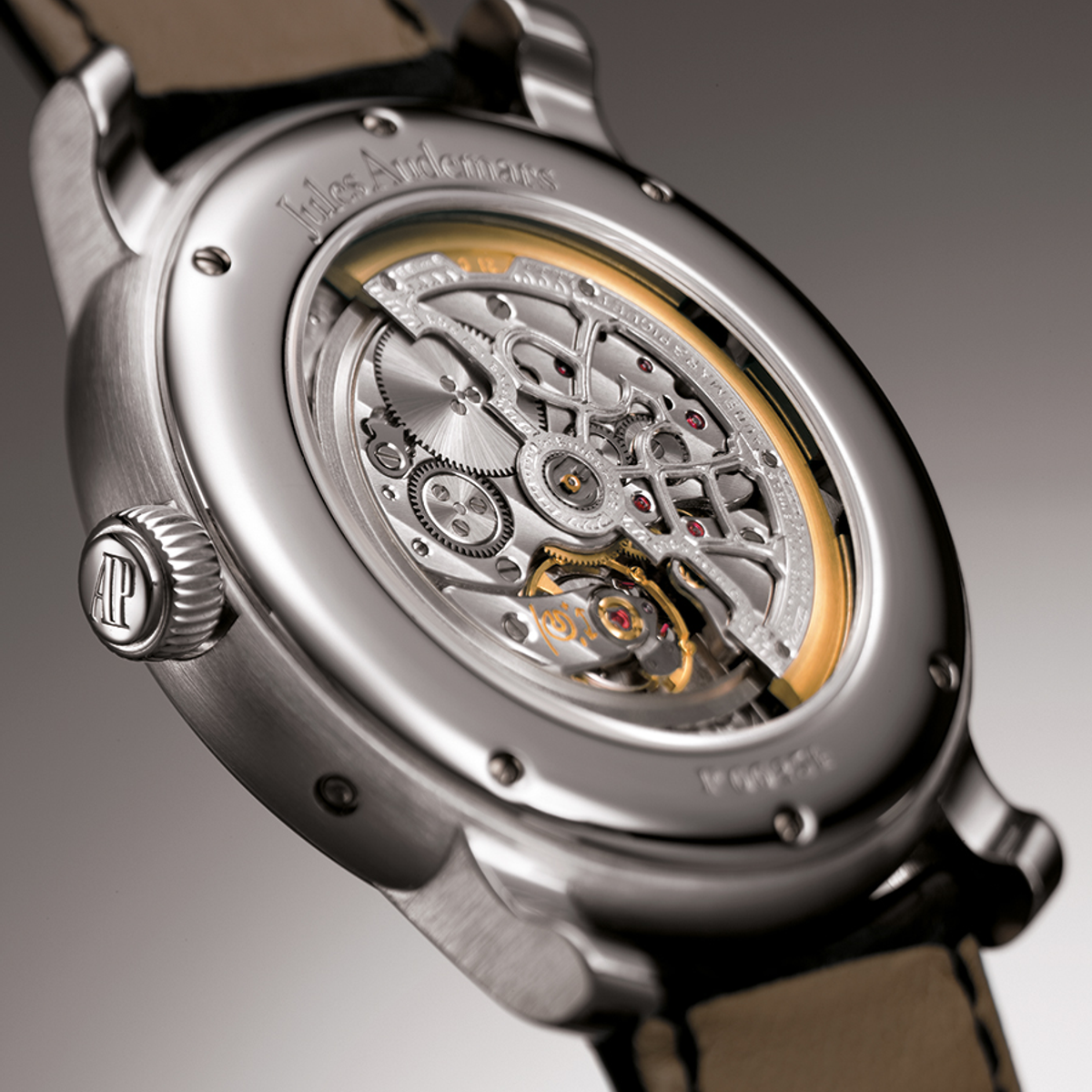The Equation of Time name reflects the particularly exclusive interpretation of this function.
Launch Year
2005
Functions
Hours, minutes, perpetual calendar, astronomical moon phase, equation of time, sunset and sunrise times
Movement
Mechanical self-winding
Distinctive features
White gold case, 43mm diameter, silver-toned dial, sapphire caseback, alligator leather strap
Audemars Piguet’s history began with the complicated watches developed by Jules-Louis Audemars, notably perpetual calendar models – one of which he made the very year the company was founded, in 1875. It became a benchmark for the brand that would perpetuate this expertise through pocket watches, then wristwatches from the 1950s onwards. In 1978 it distinguished itself by the first extra-thin self-winding perpetual calendar, and in 2000 with the first Equation of Time model created in tribute to the co-founder.
Revisited in 2005, the Jules Audemars Equation of Time watch is first and foremost a perpetual calendar. That its name does not contain this particular element is precisely because its presence is self-evident: an equation of time is almost always paired with a perpetual calendar. The latter is distinguished by a vertical display of its functions – an alignment borrowed from a 1925 pocket watch and which cleverly enhances readability: the day-date counter appears at 6 o’clock and the months counter at 12 o’clock with a high-precision ‘astronomical’ moon phase in the centre and the cycle of leap years, identified by a B, inserted on its right.
The Equation of Time name reflects the particularly exclusive interpretation of this function. The equation of time is the difference between true solar time – which is determined by the position of the Sun and therefore varies from day to day – and mean or standard solar time which has been adopted for obvious practical reasons. The difference between true and mean time ranges from approximately minus 16 minutes to approximately plus 14 minutes – with the two values coinciding only four times a year. Generally speaking, the differential is displayed either on a specially graduated counter or via an additional ‘running’ hand. However, watchmakers generally do not take into account the fact that the equation of time varies not only in accordance with the date, but also with the wearer’s location. The extraordinary Audemars Piguet Equation of Time rises to this challenge by referring to the local time of solar culmination. Each watch is pre-set to the owner’s choice of location while a sun hand enables easy readings on the inner bezel ring. The sunset and sunset times that further enrich the functions of the Jules Audemars Equation of Time are also adjusted to the chosen location.
The exceptional movement powering this watch was introduced to the Royal Oak collection in 2010. Also that year, the Jules Audemars collection welcomed the Extra-Thin. Distinguished by an elegantly clean dial, it looks to the 5271 model that was created for the launch of the extra-thin 2120 calibre in the Royal Oak.
Key Characteristics
- Particularly legible perpetual calendar with indications aligned on the 12-6 o’clock axis
- Equation of time and sunrise and sunset times adjusted to the location determined by the owner


